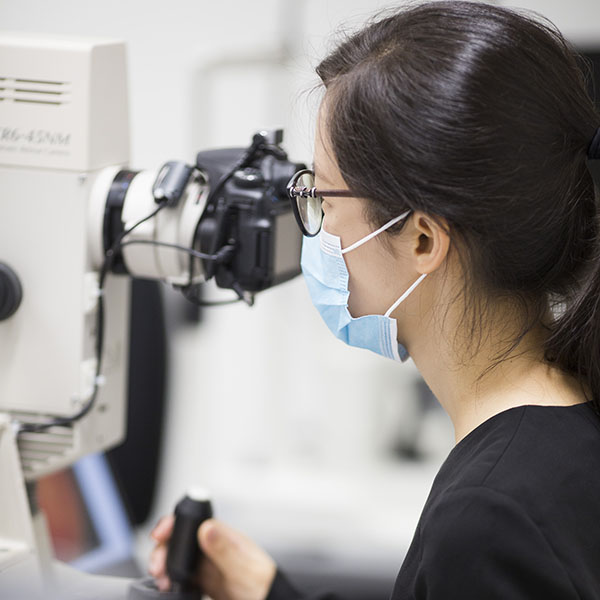News
AI scan links to Parkinson’s and cardiovascular disease
New research links the appearance of a person’s retina to Parkinson’s and cardiovascular disease risk.
An eye scan driven by artificial intelligence, which aims to capture a snapshot of a person’s overall health, could potentially predict cardiovascular and Parkinson’s disease risk.
The new research, recently published in the journals Stroke and Age and Ageing, furthers CERA work that aims to develop an eye scan to detect a wide range of health conditions.
The findings are the result of a long-running collaboration between CERA’s research fellow Dr Lisa Zhuoting Zhu, Professor Mingguang He, Director of Ophthalmic Epidemiology at CERA, and Professor Zongyuan Ge, Head of Monash Medical AI.
Other CERA researchers including Katerina Kiburg and Zachary Tan, and students including Alice Ruiye Chen, Wenyi Hu and Gabriella Bulloch also contributed to the papers.
Retinal age gap
Retinal age gap is determined by the AI system as the difference between the biological age estimated from an image of a person’s retina and their chronological age, determined by their date of birth.
“The retina, located at the back of the eye, is a unique site where the small vessels and nervous tissue can be visualised directly,” says Dr Zhu.
Tissues in the eye are similar to those in the brain, heart and kidney, meaning that disease-related changes in the eye might indicate problems in other organs of the body.
The AI system was trained on tens of thousands of images of the retina to calculate a person’s biological age, or ‘Retinal age’, using details that can’t be seen by clinicians.
“Chronological age is the time we have lived on this planet, whereas the biological age reflects the condition of your body’s functions,” says Dr Zhu.
“The difference between chronological and biological age can suggest the future risk of mortality and age-related diseases, such as cardiovascular disease and neurodegenerative diseases like Parkinson’s disease.”
In one study, a one-year increase in retinal age gap was associated with a 10 per cent increase in risk of Parkinson’s disease after adjustment of confounding factors.
A one-year increase in retinal age gap was also associated with a three per cent increase in the risk of developing cardiovascular diseases, such as heart attack or stroke.

Quick screening
Retinal age has the potential to make age-related disease screening both faster and easier.
“Although many diseases are more likely to affect the elderly, we can find considerable numbers of elderly people who maintain good health, suggesting the ageing process cannot be well tracked by chronological age alone,” says Dr Zhu.
“Instead, a better measure is biological age, which is a measurement of how the combination of genetic and environmental factors affect a person’s health.”
While there are already several ways to measure a person’s biological age, they are typically expensive or invasive, making them difficult to be used in everyday practice.
With the world’s ageing populations placing a heavy burden on global healthcare resources, developing simple and practical health screening methods is increasingly important.
The estimate of retinal age was determined by inputting more than 19,000 retinal images and the chronologic age of each person from the UK Biobank study into a state-of-the-art artificial intelligence system developed by the team.
“In the future, it may be possible for people to track their individual rates of ageing during a regular eye check,” says Dr Zhu.
“This may become important as researchers begin to develop methods to slow the ageing process and to reduce the impact of accelerated ageing”.
The next steps of Dr Zhu’s research will focus on refining the algorithm to include bigger and more diverse data sets that are more representative of the world’s population.
The team’s goal is to use the AI algorithm to develop a retinal age scoring system that can be used as a routine model of care in clinical settings.
Read the study
Zhu et al. Association of retinal age gap with arterial stiffness and incident cardiovascular disease, Stroke (2022) https://www.ahajournals.org/doi/10.1161/STROKEAHA.122.038809
Hu et al. Retinal age gap as a predictive biomarker of future risk of Parkinson’s disease, Age and Aging (2022) https://academic.oup.com/ageing/article/51/3/afac062/6555657
Funding
The research was funded by the National Health and Medical Research Council. CERA receives Operational Infrastructure Support funds from the Victorian Government.
